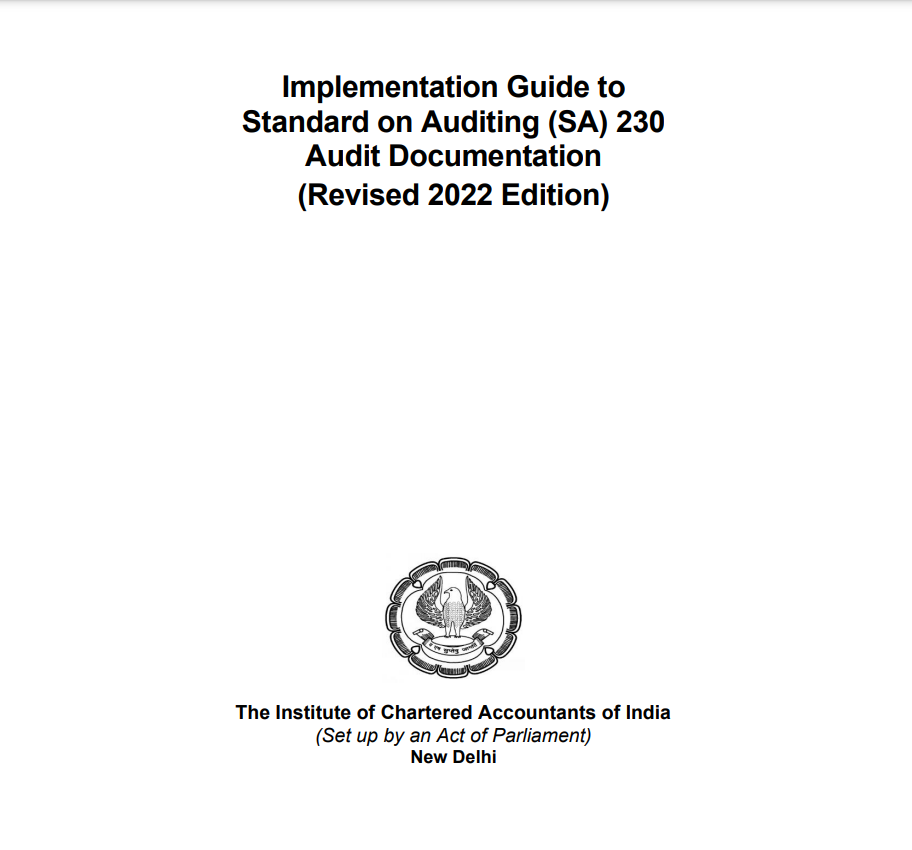Implementation Guide to SA 230, Audit Documentation (Revised 2022 Edition)
Concept of Documentation
Audit, according to Spicer and Pegler, “may be said to be such an examination of the books, accounts and vouchers of a business as will enable the auditor to satisfy that the Balance Sheet is properly drawn up, so as to give a true and fair view of the state of affairs of the business and the Profit or Loss for the
financial period, according to the best of his information and the explanations given to him and as shown by the books, and if not, in what respect he is not satisfied.”
Though the above definition addresses various aspects of an audit, one of the most important and relevant issues arising out of this definition is that the auditor needs to “satisfy himself that the financial statements are properly drawn up…”, “… according to best of his information and explanations given to him…”, “… and if not, “in what respect the auditor is not satisfied”.
An auditor, during the course of his audit may come across various materials in the form of deeds, agreements, contracts, invoices, vouchers, etc. which are the supporting materials to evidence the happening of an event/transaction. These are the basis for him to satisfy (or to not satisfy) himself in material aspects as to whether the financial statements give a true and fair view of the state of the affairs of the business and of the profit and loss for that period.
A document is any material which provides evidence of work performed, action taken or the happening of an event. The audit documentation may be recorded in paper or electronic form as mentioned in paragraph A3 of SA 230. Examples of documents include work papers, copy or abstract of signed agreements, videos, pictures, spreadsheets, transcripts, correspondences, data in electronic form containing the records in systematic manner etc.
Oxford dictionary defines documentation “as material that provides official information or evidence or that serves as a record; the process of classifying and annotating texts, photographs, etc”.
SA 230, “Audit Documentation” defines audit documentation as “The record of audit procedures performed, relevant audit evidence obtained, and conclusions the auditor reached (terms such as “working papers” or “work papers” are also sometimes used”.
Hence, “document”, in the context of audit refers more to that which is required to be maintained by an auditor to record his findings during the course of the audit.
Why is Documentation Important?
Documentation is considered the backbone of an audit. The work that the auditor performs, the explanations given to the auditor, the conclusions arrived at, all are evidenced by documentation. Inadequate or improper documentation may be considered as deficiency in performing an audit. The auditor may have executed appropriate audit procedures, however, if there is no documentation to prove, it may put question on the work done, in case any material misstatement is reported. Improper and
incomplete documentation may put the auditor in difficult situations, such as actions from various regulators.
Documentation is essential because:
• It supports the auditor’s basis for a conclusion about achieving the auditor’s objectives.
• Provides evidence that audit was planned and performed.
• It assists supervision and review.
• It results in better conceptual clarity, clarity of thought and expression.
• It facilitates better understanding and helps avoid misconception.
• It supports and evidences compliance with standards on auditing, applicable legal & regulatory requirements.
Read More on ICAI

